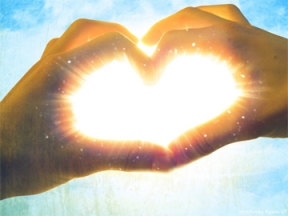
Neglect. Abuse. Divorce. Addiction. These are just a few of the life experiences that can leave children emotionally bruised or worse, causing some to develop dysfunctional outlooks and behaviors that condemn them to perpetual self-victimization as adults. “We not only perpetuate, but also protect the obstacles that stand in the way of our healing and happiness,” says Marta Maranda. The author of “What It Looks Like,” a new memoir detailing her own journey of healing, Maranda says she continued to use the defense mechanisms she developed in response to childhood trauma far into adulthood, which only served to block healthy emotional growth. She offers these tips for others whose past trauma has resulted in self-destructive thought and behavior patterns, such as a willingness to remain in unhealthy relationships or an over-reliance on comforts like food, drugs, or alcohol to soothe painful emotions.
•Look inward for reasons, not outward for blame.
It’s easy to find other people or situations to blame for your problems. Even if the initial trauma was inflicted when you were at your most vulnerable, and by someone you should have been able to trust, at some point you have to take responsibility for your own life. “How are you contributing to the dysfunction in your life?” Maranda asks. “The decision to remain stuck in a dysfunctional life is yours. The responsibility to move forward toward healing and happiness is also yours.”
•If you’ve done it, admit it.
Look fearlessly at the wrong you’ve done, at the pain you’ve inflicted on yourself and others through your own dysfunctional behavior, and admit it. “Only by owning it can you change it,” Maranda says. “And only through change can you heal.” Likewise, look kindly and with humility at the good you’ve done. Own all that is valuable about you, and build upon it.
•Build a support system.
No one’s said it better than Einstein: You can’t fix a problem with the same broken mind that created it. Left to their own devices, many people who are convinced they need to change will still seek out environments that support their dysfunctions rather than strengthen their healing. “Change is hard, and healing isn’t always comfortable,” Maranda says. “That’s why people often find their way back to what they know, even if what they know is destructive or deadly.” Building a support system of people—whether family or friends, or from a therapeutic or spiritual community—whose perspectives get you out of your comfort zone and away from the dysfunction you know is essential for healing.








